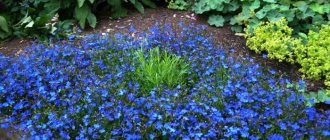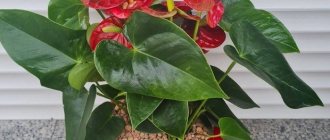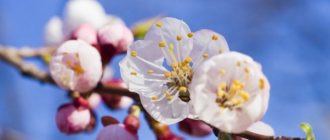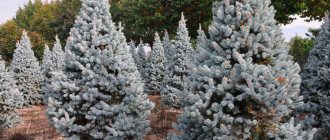The decoration of any garden is the cherry. This is not only a beautifully flowering tree, but also delicious fruits that will decorate your table after harvest.
The variety of cherry varieties allows you to choose the best option for many climatic zones in Russia. From this article you will learn how to properly plant and care for this tree.
Description of cherries and their main varieties
Cherry is a shrub or tree reaching 10 m. The bark is brown and gray in color. The cherry leaves, sharp at the end, are about 7-8 cm long. They have the shape of an ellipse. Their upper surface is dark green in color, while the lower surface is lighter in color.
Flowers can be white or pink. They form umbrella-shaped inflorescences consisting of several flowers. The tree begins to bloom at the end of March or beginning of April. It bears fruit towards the end of May. The fruits are juicy with a sweet and sour taste.
The following frost-resistant varieties are suitable for the Moscow climate zone and are not afraid of many diseases, including coccomycosis:
Turgenevka, characterized by high yields. The tree reaches 3 m in height and produces burgundy, sweet and sour heart-shaped fruits. To pollinate it, you need to have trees in the garden that belong to the following varieties.
Lyubskaya is a variety that produces abundant harvests of dark red fruits. The height of the plant is 2.5 m. The crown of the tree is spreading. This is a self-fertile cherry.
Molodezhnaya is a variety resistant to winter weather. The tree can withstand fungal activity. Height up to 2.5 m. Has juicy fruits of dark red shades.
If you want to have early varieties in the garden, the fruits of which ripen in June, then you should choose Orlovskaya or English early with juicy fruits.
Low-growing cherries (Shirpotreb) produce dessert fruits of a dark brown hue with a slight sourness, and the fruits of the “Expectation” variety are perfect for jam or compotes.
You can evaluate mid-season cherry varieties not only by photos, but also by the taste of the fruit:- Malinovka is a medium-sized tree with sweet and sour fruits of a darker shade;
- Shokoladnitsa is a frost-resistant variety that survives well in drought conditions;
- Vladimirskaya is a tall tree with almost black fruits.
Well, late varieties include Belle, Nord Star, Erudite, Recollection, which produce tasty and juicy fruits for the gardener’s table.
Contraindications
Like any other product or remedy, cherries are beneficial when used in the right quantities. People suffering from diabetes mellitus and diseases of the digestive system (namely, the intestines and stomach) should not eat excessive amounts of fruits.
If you are going to treat any diseases with cherry-based products, first consult with professional doctors.
Cherry pruning rules
If you want your garden to look like in the photo, you need to do the tree pruning work correctly. 5-7 of the strongest branches should be left on the seedlings. The remaining ones are cut in a circle and treated with garden varnish.
The branches should be directed in all directions at intervals of at least 10 cm. And after the second year, branches that are directed into the crown must be removed. A cherry tree should have up to 15 main branches.
After the buds swell in March, it is necessary to carry out primary pruning. If you are late with this work, then it is better not to prune during sap flow.
These activities can be carried out in the summer, when the harvest is harvested.
You should not remove shoots that are shorter than 35 cm. But branches that thicken the crown should be carefully cut off. The height of the trunk should not exceed the length of the branches by more than 18-20 cm. Therefore, it must be shortened accordingly.
After the end of the growing season, autumn pruning is necessary. But if you don’t have time before the cold weather, you shouldn’t do it. Annual trees are not pruned in the fall. Sanitary work to remove diseased and injured branches is carried out regularly.
The cherry orchard will bloom and bear fruit if it is properly cared for. It is necessary not only to plant seedlings correctly, but also to regularly prune them, maintain a watering regime, and protect trees from pests and diseases.
Landing site: basic requirements for the site
An important limitation for planting cherries is the site’s tendency to stagnate moisture. The tree is not planted in lowlands, near groundwater, where the soil is prone to rapid waterlogging.
Excessive moisture has a negative impact on the condition of tree roots. They overheat, rot, and become infected with diseases. The tree dries out and the cherry blossoms do not bloom in a timely manner.
The ideal choice for placing cherries is:
- well-lit areas with a southern, western, southwestern location;
- plain or hill, sheltered from intense winds;
- sandy, loamy soil with good drainage;
- absence of excessive soil acidity.
If the acidity level is increased, liming will help. After this procedure, it is recommended to saturate the soil with compost or fertilize with mullein. Then the area is dug up.
Cherry photo
Application
Thanks to its strong root system, the tree is often used to strengthen slopes and dumps.
- The wood of this tree is actively used in the manufacture of expensive luxury furniture, various carpentry items and other accessories.
- The wood can also be processed into veneer, which is used in intarsi and marquetry.
- Cherry fruits are often used in preparing a wide variety of dishes. The berries are also used in the field of medicine. There they serve as a flavoring agent or food additive.
Due to the large number of flowers, gardens made from these plants can serve as excellent honey plants.
Cherry is also used for cosmetic purposes - masks are made from it.











